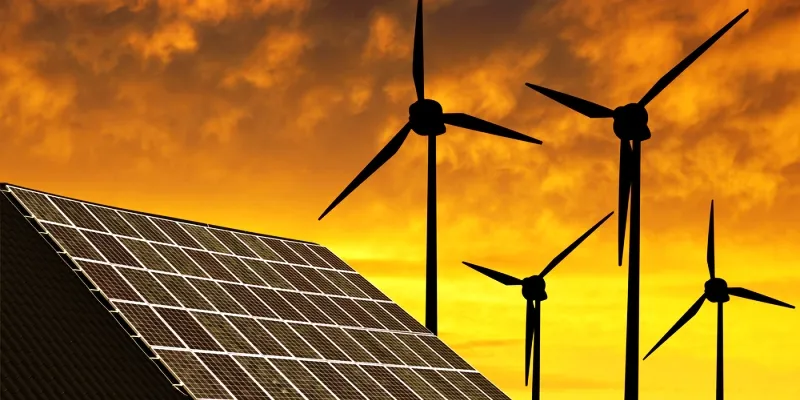How low CSR in the clean energy sector is hurting India
A new report investigates into the low CSR spends in the clean energy sector.

India, the second most populous economy in the world, has clearly the most number of households without electricity. It is estimated that, till date, approximately 300 million people in India lack access to energy.
A new report, titled Energising Development, launched by Samhita along with International Finance Corportaion (IFC) and Shakti Foundation found out that more than 50 percent of the top 100 companies have Corporate Social Responsibility (CSR) programmes in education, sanitation or skills and livelihoods but not clean energy.
Speaking of such biased preferences for CSR investments, Priya Naik, the founder and CEO of Samhita, reiterates the crucial role played by energy interventions in aiding rural development. “Energy is a catalyst for all other kinds of development. All livelihood opportunities seize when there is lack of access to clean and efficient energy,” she says.
Citing examples of the same, Priya adds,
Children can’t study after dark, women have to depend on traditional cooking methods that increase their drudgery etc… Without energy, sectors like agriculture, health, education and even women empowerment are likely to get hampered. Clean energy interventions, by being more productive and cost-effective solve most of these problems.
The report that analysed CSR Initiatives of the top 100 companies with the largest CSR spends from the BSE 500 also conducted multi-stakeholder interviews as part of its study. Lack of awareness among rural communities on the importance of energy, coupled with a perception that energy interventions are highly technical in nature often discouraged many CSR teams from tapping into this viable sector.
The need for clean energy is mostly invisible. People from rural areas do not list it as one of their top priorities, so it doesn’t fit into the demand-supply model.
"Moreover, companies are not equipped to respond to low energy needs with sectors like education having higher chances of being better understood among CSR managers. And that’s how the budget allocations for clean energy are skewed", says Priya.
When asked if the energy interventions are actually technical in nature, Priya agrees, “Yes, technically, information on the working of mini-grids, their load, capacity etc… can be sometimes be difficult to comprehend.”
The report also mapped various Indian states based on the need for energy access programmes and the distribution of CSR activity in clean energy, and analysed the geographical gaps that exist. According to its findings, the need for energy access was highest in Bihar and Meghalaya. Additionally, Uttar Pradesh and Madhya Pradesh fared well in adopting progressive state policies that encourage the deployment of renewable energy.

“In some states the need for clean energy is clear but this might be coupled with unfavourable ecosystems that don’t support energy interventions and vice versa. In either case, the need should be aligned with investments. More enabling state policies in this regard can be a game-changer,” says Priya, who quotes the example of UP government’s initiative towards integrating mini-grid projects.
Section 135 of the Companies Act, 2013 has institutionalised companies as critical stakeholders in the nation’s development through a mandatory CSR provision. However, the report’s key findings suggest that only 39 out of the top 100 companies reported CSR involvement in the clean energy space from 2015-16.
The report analysed that there was “a significant difference in the budgets allocated among companies for renewable energy programmes,” with the median standing at a miniscule Rs 2.45 crore.
Among the 39 companies that were involved in clean energy, the majority focused on product-based solutions such as installation of solar street lights and distribution of solar lamps or lanterns for household use.
The key is also to ensure that energy interventions work on a sustainable model. Sometimes, giving a product such as a solar lantern is not sufficient solution. People might use it and return to kerosene lamps in a year. Hence, the challenge is to ensure better integration of these solutions in the long-run, says Priya.
Reasoning on why solar energy interventions continue to remain to be much preferred, Priya adds, "The policy environment around solar energy is comparatively relaxed considering it’s the most prevalent source of energy. Since it’s also more popular and cost-effective, there are larger number of investment partners willing to capitalise on it".
One of the key recommendations of the report suggests how ‘innovative financing’ in the sector could help.
There needs to be a continuum of financial options (in the form of subsidies, loan guarantees etc…) that need to be made available at all levels for all the stakeholders involved, be it customers or investors, says Priya.
Wrapping up, she also stresses on better investments in the clean energy ecosystem (in generating research and evidence) where qualitative data can provide more insight into why CSR initiatives are disinterested in investing in clean energy.
Further to the report, there is also a set of stakeholder specific information or knowledge that is planned to be released in order to help multiple foundations, corporations and investors.







